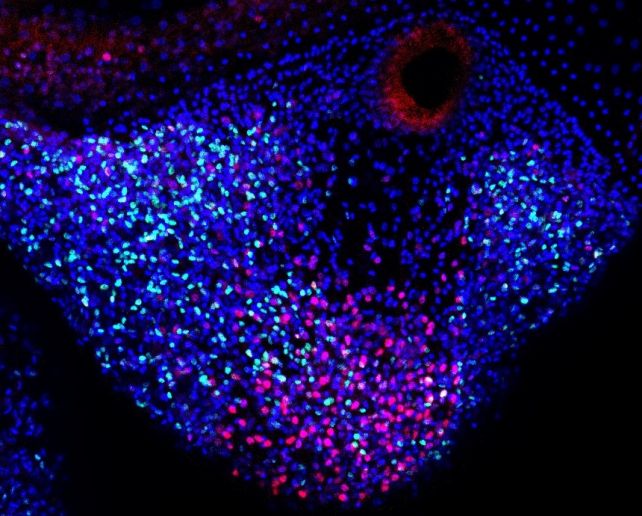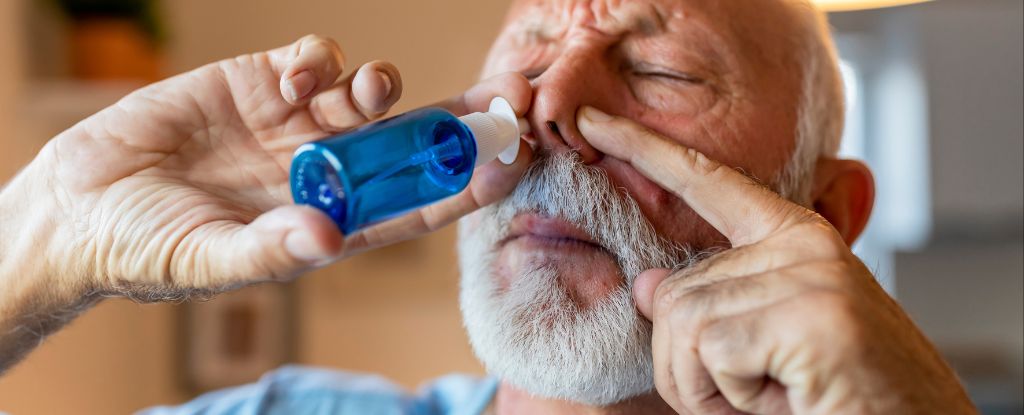Jellyfish don’t seem to have a lot going on. They’re gelatinous blobs that have neither brains, nor hearts, nor blood, often at the mercy of where ocean currents take them.
But that doesn’t mean they are simple. Far from it. They’re extremely efficient, making them one of the most successful animal groups on the planet.
One of the keys to that success is their tentacles – long tendrils that entangle their prey, delivering paralyzing toxins that allow the jellyfish to digest in peace. If something untoward happens to those tentacles, the jellyfish can simply regrow them, in a very short space of time.
Studying a tiny, fingernail-sized jellyfish called Cladonema pacificum, a team of researchers led by biologist Sosuke Fujita of the University of Tokyo has finally revealed the cellular mechanisms behind this amazing act of healing.
The key to regeneration, from insects to vertebrates such as salamanders, is a clump of cells called a blastema. We now know that jellyfish partially grow their blastema from tissues called repair-specific proliferative cells; stem-like cells that are actively growing and dividing but not yet differentiated. These are very similar to stem cells in that they can become whatever is needed of their host.
“Importantly, these stem-like proliferative cells in blastema are different from the resident stem cells localized in the tentacle,” says biologist Yuichiro Nakajima of the University of Tokyo. “Repair-specific proliferative cells mainly contribute to the epithelium – the thin outer layer – of the newly formed tentacle.”
To determine how the jellyfish does what it does, the researchers carefully removed tentacles, waited for the regeneration process to kick in, then euthanized and dissected the animals, using different stains to label the different cells.
Jellyfish actually have stem cells hanging out in and near their tentacles all the time. These are cells that don’t yet have an assigned function, and can grow into whatever type of cell the body needs. They are used for ongoing maintenance and repair of the jellyfish’s body during their lifetime.
However, the repair-specific proliferative cells only appear when the jellyfish is injured – they are specific to repairing and regenerating injured body parts. This is similar to repair-specific cells found in salamanders, which develop with bilateral symmetry, as opposed to the strange, radial development of the jelly.

“In this study, our aim was to address the mechanism of blastema formation, using the tentacle of cnidarian jellyfish Cladonema as a regenerative model in non-bilaterians,” Fujita explains.
“Given that repair-specific proliferative cells are analogues to the restricted stem cells in bilaterian salamander limbs, we can surmise that blastema formation by repair-specific proliferative cells is a common feature independently acquired for complex organ and appendage regeneration during animal evolution.”
Salamanders and jellyfish are very different from each other; the last common ancestor between jellyfish and bilaterians lived hundreds of millions of years ago, and the different evolutionary paths are evident. Which means it’s very interesting to find a common repair mechanism in both; it could suggest some sort of convergent evolution, where very different organisms independently develop similar traits.
What we don’t currently have is the tools to discover how the repair-specific proliferative cells emerged in jellyfish. This is the crucial next step, the researchers say – because it could help us figure out ways to give humans the ability to regenerate body parts.
“Ultimately,” Nakajima says, “understanding blastema formation mechanisms in regenerative animals, including jellyfish, may help us identify cellular and molecular components that improve our own regenerative abilities.”
The research has been published in PLOS Biology.





